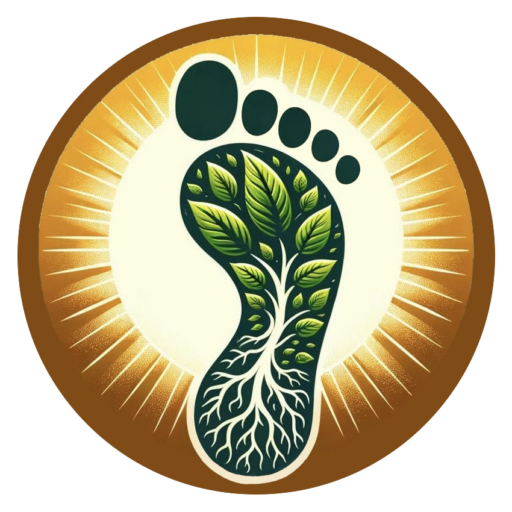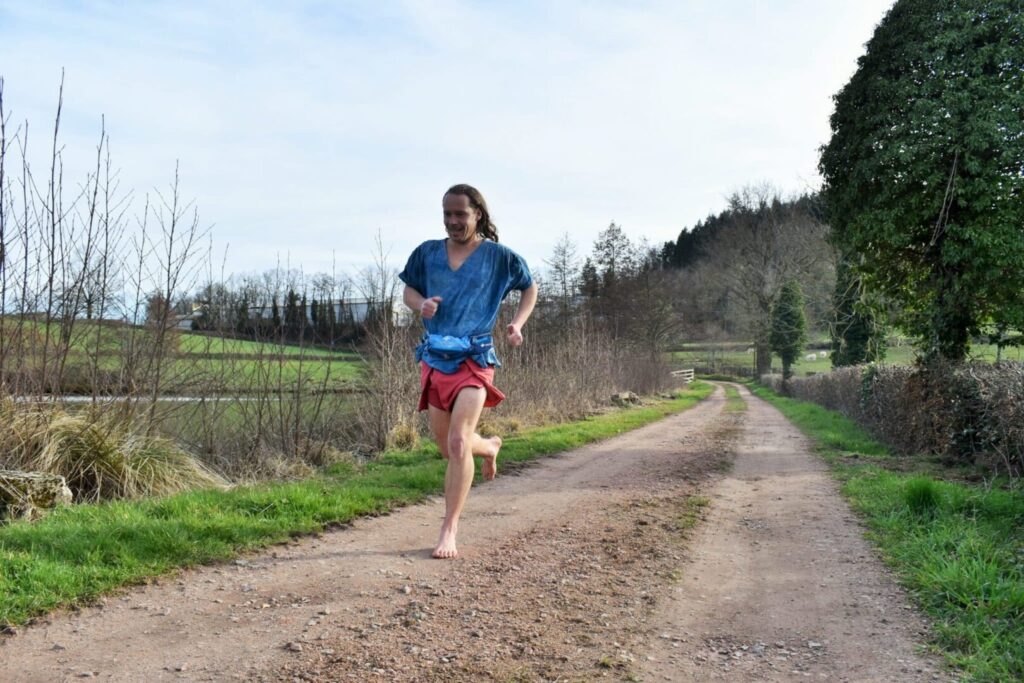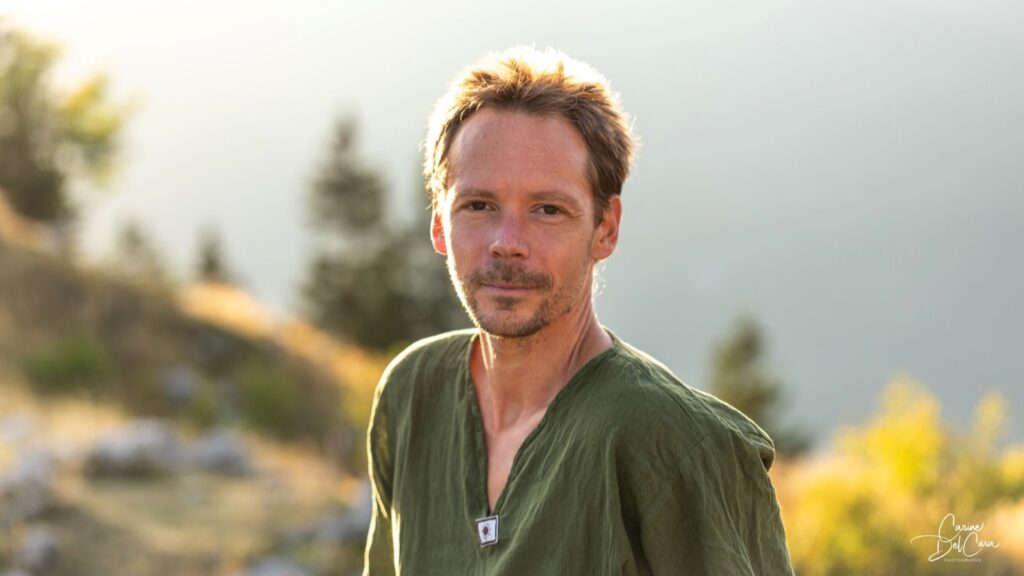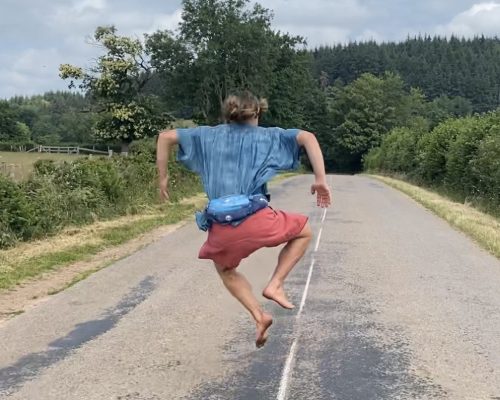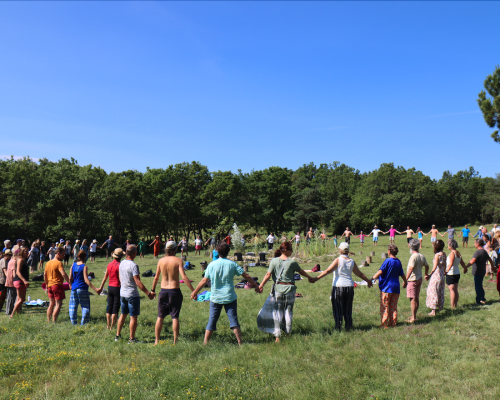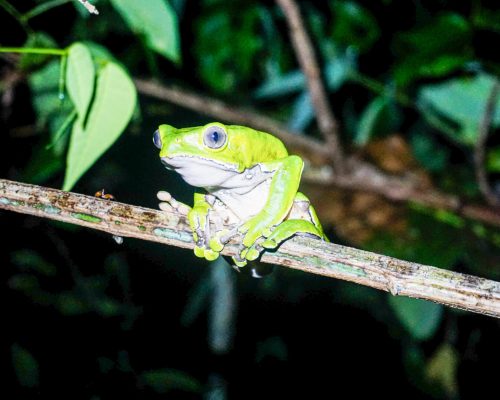Please note: these videos are currently in French, but you can activate YouTube’s auto-generated subtitles in English while we work on providing a dedicated English version.
"The human foot is a masterpiece of engineering and a work of art."
Leonardo da Vinci
Running Injuries
In June 2013, while participating in the ascent of Poupet, a 17.7 km race with a positive elevation gain of 666 meters in the Jura, I was at the peak of my form and finished 21st out of 916. But for a year, sciatica had forced me into daily stretching and enforced rest for several weeks, punctuated by visits to the osteopath. In this unfavorable context, I could barely maintain my level and kept getting injured, always in the same spot: sciatica in my left leg.
Running injuries take on the appearance of fatality since it is the fate of the majority of runners to be an eternal injured person on probation…. So much so that in the locker rooms of a running club, everyone’s “aches” are a natural and unavoidable topic, much like the weather. Viewed from this angle, it is hard to argue with the funny individuals in white coats who claim, in a tone that brooks no reply, that the human being is not made to run…
In any case, I had not come into the world to be reasonable, so instead of allowing for a two-day recovery phase after Poupet, motivated by the good time from the weekend that hinted at imminent progress, I did a heavy track session. A fatal mistake that truly awakened the sciatica, which from then on never left me, whether during training in running, cycling, climbing, and kayaking, in the car to disengage, or, worse, at work in the woods.
The stretches I practiced self-taught no longer relieved me, and I did not yet know an effective movement (see the last paragraph) to stretch the piriformis. I was living a real ordeal to the point of deciding to stop running for six months. Instead, I ran to osteopaths, physiotherapists, and healers who only managed to temporarily release the piriformis that was squeezing the sciatic nerve in an involuntary and permanent contraction.
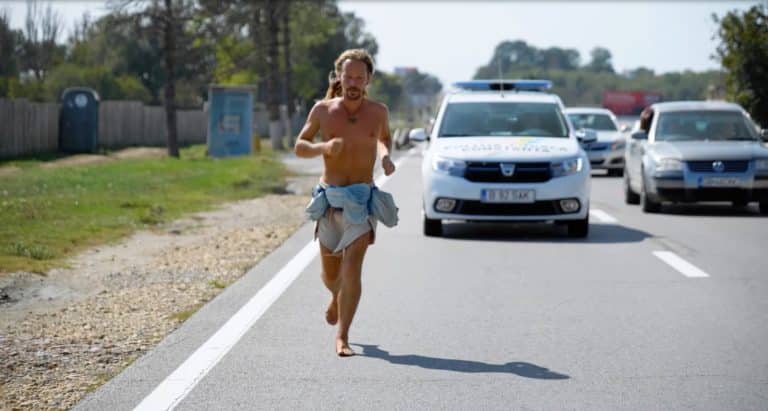

Deep down, I did not believe in this masquerade of “medicine men” and their manipulations, which over time represented a financial cost, not to mention that it was absurd that my health depended on all these people who clearly did not hold the cure-all.
I had faith in my body and knew it would find the solution one day; I just needed to be patient and listen attentively to it. In April 2014, almost a year after Poupet, a simple jog still caused me pain for several days.
Natural and Physiological Running
I had probably suffered enough to be ready to receive “Born to Run” by Christopher McDougall, an American bestseller handed to me by a fellow runner from the Roannais athletic club.
A magical book with a strong persuasive power that rehabilitated the human body to its rightful place as the most evolved organism on the planet, something no medical manual could do. At the end of this book, read in one go, propelled by the power of the theory presented, I permanently put my shoes away and set off for my first barefoot training, excited at the idea of embarking on a new exciting adventure.
And ten days later, I ran the 10 km of Montceau les Mines (71), on a terrain alternating small pebbles and rough asphalt. The “ten” of Montceau was symbolic to me because I had run my first ten there in 2006 (in 46’42’’), so in 2014, I wanted to run my first ten barefoot (in 45’10’’). Certainly, I was far from my best time (34’58”) on this distance, but it was just the beginning… As of today, April 2017, my best barefoot time on a ten-kilometer is 38’23’’.
With this ridiculous training of ten days to get my feet used to embracing the ground, I crossed the finish line with several blisters the size of a thumb and full of blood before slowly returning, almost groping, to my car where I could sit down with relief. The pain in my heels was such that I worked a week on tiptoes with a brushcutter in hand on the treacherous slopes of Beaujolais. I do not have a bad memory of it; on the contrary, the fresh exhilaration sparked by the start of a new challenge overshadowed everything else.
Pain is just information like a red light on a dashboard; I had a mind of iron but feet of clay… There was a beautiful reward at the end that justified everything: I could once again live without suffering from this stubborn sciatica, suddenly and definitively gone. The message had been received, and this liberation was priceless.
Certainly, it was now my feet that hurt, but that pain was temporary and understandable, thus acceptable. All things considered, since suffering is an integral part of this world, I would even say it is one of the main engines of evolution, just like love; we might as well choose it to serve our aspirations and goals, while bringing a touch of madness that adds color to life. Isn’t that wisdom itself? Suffering is like the wind on the ocean; if the rigging is used wisely, it helps to move forward; otherwise, we drift or capsize… Before going further, I will first answer the question posed at the beginning of the chapter.
The Logic of Barefoot Running
Here is an overview of the theory, fully developed in “The Story of the Human Body” by Daniel E. Lieberman, professor of evolutionary human biology at Harvard, and recounted in “Born to Run” by C. McDougall:
Our feet have as many sensory receptors as our hands and as many sweat glands as our armpits. In short, nothing in principle condemns them to be inside a sock lined with a shoe. Then, and this is the essential point, take the time to observe the strides of runners when they try to go a bit fast, for example on a track or during a competition.
You will notice that at least 80% of them strike the ground with their heel. Among the remaining 20%, who are generally the fastest and least injured, it is the front of the foot that touches the ground first. The way of running is not linked to any genetic determinism, and those who strike the ground with their heel as if they were using a pickaxe are not at all struck by bad luck.
Everyone can convince themselves of this in a few minutes, and the protocol is simple. Take off your shoes (as well as your socks) and go run barefoot on a moderately comfortable surface like a dirt path with small pebbles or on rough asphalt. Then observe carefully how you place your feet. Yes, it’s universal; everyone runs by touching the ground on the outer front of the foot, at the level of the fifth metatarsal to be precise. It is striking to note that this simple experience is unknown in the medical sphere, which teaches, in its manuals, the natural rolling of the foot by the heel.


Moreover, this beautiful natural stride is easily observed in children even when they wear shoes, unless the conditioning instilled by parents has already regrettably undermined their predispositions.
How many times a day do children hear this phrase: “Put on your shoes!” in a peremptory tone?
The Transition to Barefoot Running
With training (you need to count on a year), the stride completely transforms and regains its original grace; the arch of the foot and the calf serve as shock absorbers, and the runner makes no noise; they caress the ground and startle those they overtake, having not been warned by the characteristic thud of a shoe-clad stride. Tests on treadmills have even proven that the impact of the foot on the ground is greater with shoes than without, and this changes everything at the skeletal, tendinous, and muscular levels.
Moreover, the first barefoot sessions left me with significant soreness, particularly in my calves, as if I had never run. I therefore had to relearn how to run with these new supports that use the body with the right manual.
All these sensory receptors that at first make us scream in pain are not synonymous with inadequacy or fragility; they are there, on the contrary, to teach us how to place our feet correctly. Thanks to their incredible complexity, which gives them great plasticity, our feet can compensate for our anatomical defects, genetic in this case, such as one leg shorter than the other, a tilted pelvis, etc.
The adult foot consists of 26 bones—so, for both feet, a quarter of the bones making up the entire skeleton—16 joints, 107 ligaments that hold them, and 20 muscles that allow their movement.
As all these observations are also valid for walking barefoot, I liked to say that at 30, I was learning to walk a second time, for real this time.
By gradually getting used to being barefoot, once past the most delicate moments, the feet create a thick custom sole, more perfected than any orthopedic sole ever imagined. We then discover a new world, that of earthly sensations that unfold into a multitude of textures and temperatures.
Exactly as if we were regaining the use of a lost sense, and it then becomes unthinkable to give up this new pleasure. Contrary to a widespread idea, feet are not protected by calluses but by fatty cushions.
This is a healthy and living tissue, moreover insulating, unlike calluses which are a mass of dead cells due to the inappropriate wearing of shoes and/or an acidification of the organism. Once our fatty cushions are well developed, our feet fear neither pebbles nor even shards of glass, as poor children around the world know well, who run everywhere barefoot without a second thought.
This predisposes them unknowingly to become future athletes. The moral is precisely here:
Let your children be barefoot so they can develop strong feet and adopt a good natural posture that guarantees a straight and healthy back.
Once you know how to run barefoot, an essential prerequisite, the use of shoes no longer becomes detrimental to health, provided you regularly maintain moments of relaxation outdoors. We must not forget that for several million years, our feet have adapted to running barefoot on all terrains and that the invention of the first shoes dates back only 10,000 years, a blink of an eye in the evolutionary saga of the human body that began 63 million years ago.
I will conclude with one last breach in the bars of “ready-to-think” by stating that running barefoot is in no way incompatible with sports performance, as remarkably demonstrated by Abebe Bikila in 1960 at the Rome Olympics by winning the marathon and setting a world record. This Ethiopian, made iconic by his barefoot victory, is far from being the only one (South African Zola Budd, two world records on 5000m in 1984 and 1985; Réunion triathlete David Hauss, European champion 2015; Dutchman Wim Hof and his marathon in the snow or even Jake Brown’s crossing of the USA in 2015…) to have achieved a physical feat without artifices, without the latest model sold at an exorbitant price…
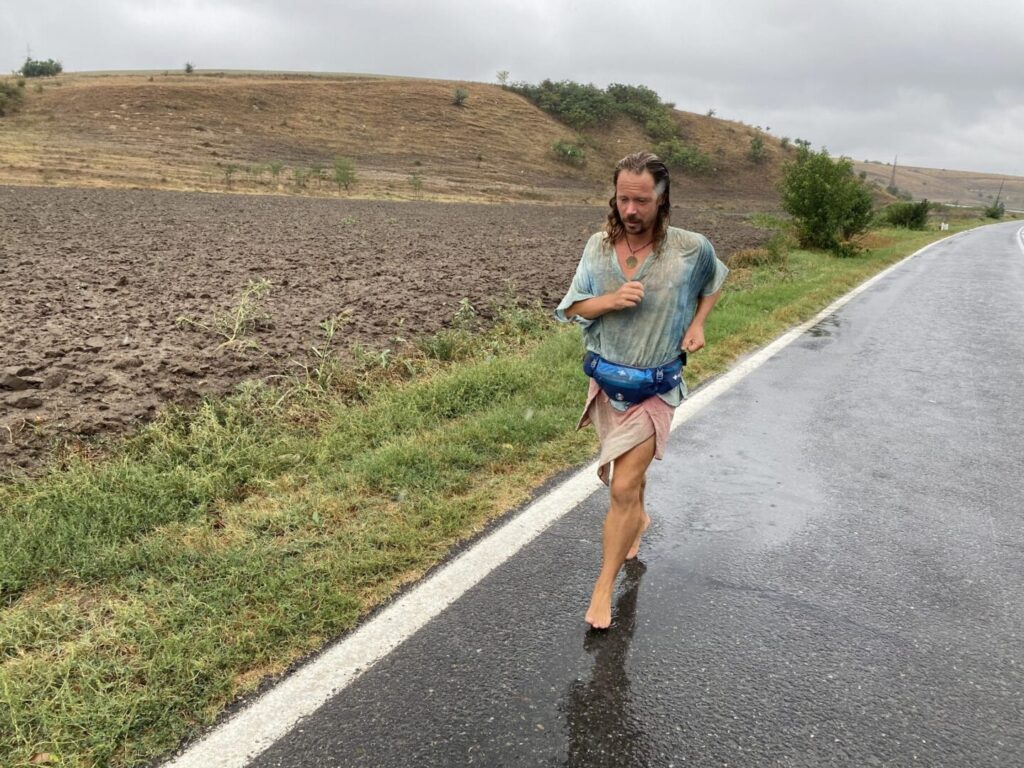

The Benefits of Barefoot Running and Grounding
Since my first steps on Earth in 2013, I have learned another good reason to be barefoot on the ground, what is called grounding: On one side, the Earth is negatively charged, on the other side, all inflammatory processes in the human body (the starting point of diseases) charge us positively. Consequently, isolating ourselves from the ground by wearing rubber soles prevents us from discharging electrically, which leads to overloads and harmful electrical interferences for our body. The body being a vast electrical network, it is important to be connected to the Earth like any electrical device.
As Dr. Sinatra says,“inflammation thrives when there is an increase in free radicals and a strong positive charge in the blood. By sending negatively charged ions into the body, grounding is a perfect antioxidant, the original anti-inflammatory!”
To learn more about grounding and to find out about scientific evidence on this subject: read this article and watch a video. Translation note: the article link leads to a website in French. To read it in English or another language, simply copy the URL and paste it into Google Translate https://translate.google.com/?sl=fr&tl=it&op=translate.
The last paragraph:
The piriformis syndrome (or runner’s sciatica) is caused by compression of the sciatic nerve by the piriformis muscle. An injury, overly processed food, excessive training in running can lead to spasms and contractions in the piriformis and surrounding muscles, nicknamed garbage muscles due to their ability to store excess toxins. This leads, in turn, to compression of the sciatic nerve. The piriformis syndrome then mimics a truncated S1 sciatica, manifested by pain felt on one side of the body, in one buttock and all the way down the leg to the foot. An effective stretch for the piriformis that I did not know at the time and that none of the many osteopaths and physiotherapists I consulted showed me is as follows:
Lying on your back, legs bent, feet flat on the ground.
Bring the ankle of the right foot over the left knee.
Pass your hands over the tibia of the left leg and pull towards the chest.
Once on each side, hold for 20-30 seconds.

